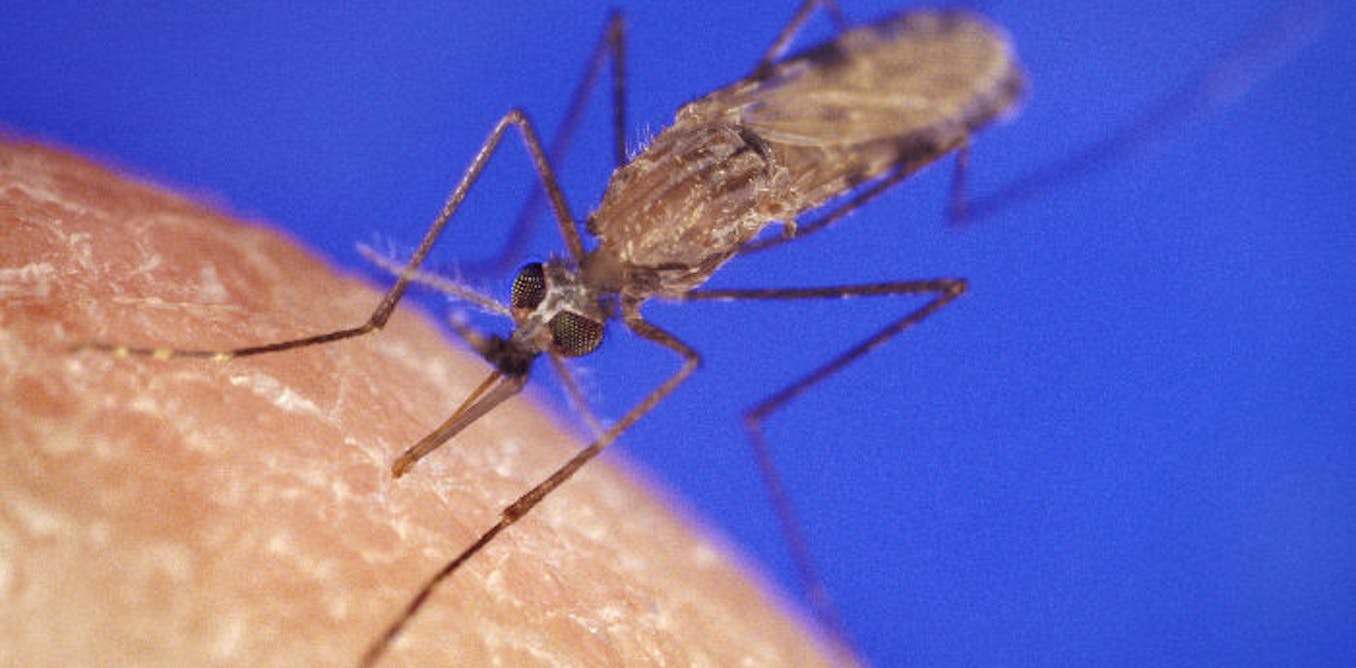Malaria remains one of the world’s most devastating infectious diseases, claiming more than half a million lives each year. In Africa, the illness is mostly caused by a parasite carried by mosquitoes – Plasmodium falciparum.
When the parasite invades the human body, it faces a hostile environment: soaring fevers, attacks from the body’s immune system, and the stress of antimalarial medicines. Yet it can survive, thanks to an internal defence system made up of “helper” molecules known as heat shock proteins.
Among these, a powerful group called small heat shock proteins act as the parasite’s last line of defence. These molecules behave like tiny bodyguards, protecting other proteins inside the parasite from damage when conditions become extreme. They are the parasite’s emergency rescue team when energy reserves are dangerously low, such as during high fever or exposure to drugs.
In my biochemistry laboratory, we’re looking for ways to disrupt these bodyguards.
Master’s student Francisca Magum Timothy and I are using advanced protein-chemistry tools to examine three small heat shock proteins found in the parasite. These share a common core structure but behave differently.
We’ve found that they can be chemically disrupted. This marks an exciting direction for malaria research. Instead of directly killing the parasite, the approach focuses on disarming its defences, allowing other treatments or the body’s immune system to finish the job.
The next steps involve finding small, drug-like molecules that can specifically target and disable these parasite proteins without harming human cells. This will require advanced computer modelling, laboratory testing and eventually, studies in animal models to make sure the approach is both effective and safe. If successful, this could lead to a new class of antimalarial drugs that work in a completely different way from current treatments. This is an especially important goal as resistance to existing medicines continues to grow.
Read more:
Malaria scorecard: battles have been won and advances made, but the war isn’t over
From early laboratory work to developing a drug that could be tested in people will likely take around eight to 10 years, depending on how the candidates perform in each research stage. Still, the discovery of these heat shock protein targets represents a big step forward and offers real hope for more effective, long-lasting malaria control in the future.
Unpacking the mysteries of three proteins
We found clear differences between the three proteins we tested in the laboratory.
One was the strongest and most stable of the trio, the other was more flexible but less stable, and one was the weakest protector.
When tested in stress conditions, all three acted as “molecular sponges”, preventing other proteins from clumping together. That’s a crucial step for the parasite’s survival during fever. But their protective strength varied: one offered the most consistent defence, while the other lost structure more easily.
These findings suggest that the parasite may rely on a team effort among the three, each taking on a slightly different role during stress.
So we asked: could natural compounds found in plants disrupt these bodyguards? Our team focused on quercetin, a plant-based flavonoid. Flavonoids are among the compounds that give plants their bright colours, like red in apples, purple in berries, or yellow in lemons. They help protect plants from sunlight, pests and disease. These are abundant in apples, onions and berries. Quercetin is already known for its antioxidant and anti-inflammatory properties. Some studies have already hinted that it might slow down malaria parasites.
When we exposed the parasite proteins to quercetin, we observed remarkable effects. The compound destabilised the small heat shock proteins, altering their shape and reducing their ability to protect other proteins. In simple terms, quercetin appeared to confuse or weaken the parasite’s bodyguards.
Further tests confirmed that quercetin also slowed the growth of malaria parasites in laboratory cultures. When malaria parasites were grown in controlled laboratory conditions and exposed to quercetin, they multiplied more slowly than usual, including strains that are resistant to standard drugs. This is encouraging because it suggests that quercetin itself, or new medicines made to work like it but even more strongly, could become the starting point for developing a new type of antimalarial drug in the future.
Moreover, small heat shock proteins kick in when the parasite’s energy supply, known as ATP, the cell’s main “fuel”, runs very low. In simple terms, when the parasite is close to running out of energy and facing danger, these proteins act as its last line of defence.
Next steps
Our findings point to the possibility of drugs being designed that shut down these ATP-independent helpers and strike the parasite precisely when it is weakest.
Although quercetin itself is a natural compound found in many foods, its potency and stability are not yet strong enough for clinical use. The team envisions chemical modification of quercetin’s structure to create derivatives with enhanced activity and better drug-like properties.
As global efforts to eliminate malaria face growing challenges from drug resistance, innovations like this provide renewed hope. By turning the parasite’s own survival machinery against it, scientists may have found a subtle but powerful way to outsmart one of humanity’s oldest foes.

